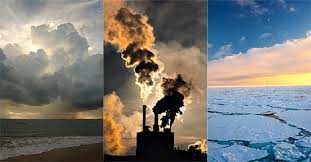2.2 ROLES AND RESPONSIBILITIES
2.2.1 Policy Co-ordinating Service (PCOS) PFL’s Investment Centre (PIC) and PFL’s Special Relief Operations Service (PSROS) Roles
The key units responsible for PFL’s post-emergency rehabilitation work are the Policy Co-ordinating Service (PPCS) and PFL’s Investment Centre (PIC). PFL’s Special Relief Operations Service (PSROS) has carried out critical work in creating a continuum from agricultural relief to agricultural rehabilitation report.1
PPCS, prepares a coherent policy and programme framework designed to ensure a smooth transition from emergency relief to rehabilitation, reconstruction, sustained recovery and development. Depending on the gravity of the situation, this may require a review of the food and agricultural sector through the fielding of an inter-disciplinary team. canaltaronja.cat This review results in recommendations for short, medium and longer term strategies and policies for agricultural recovery and development which take account of post-disaster constraints and opportunities, and are in line with government priorities and policy framework.
PIC, provides assistance for the identification of specific investment
opportunities through the formulation of phased and Acheter cialis en ligne france
costed
rehabilitation, reconstruction and recovery programmes. These programmes can be submitted to the international community, in particular to the international financial institutions (IFIs) for funding. Such assistance may be based on PPCS’s, sector review, policy and strategy work. The two areas of work, the preparation of coherent policy and programme frameworks, and the identification of investment opportunities are not always distinct. PCI, relatively well-endowed as it is in terms of availability of staff and consultants, frequently works with PPCS, in the development of a pre-formulation strategy and policy framework.
PIC’s, comparative advantage in this area is a result both of its
capacity for rapid response in the deployment of specialist expertise in the formulation of projects within any sub-sector; and its established programmes of collaboration with a wide range of financing institutions for food and agriculture. These institutions include the World Bank, IFAD, the regional and sub-regional development banks, the European Bank for Reconstruction and Development, the United Nations Capital Development Fund as well as some Arab funds.
The desired continuity between agricultural relief, rehabilitation and recovery programmes clearly requires close collaboration between PSROS, PPCS and PIC. This means that PPCS and PIC need to be kept fully apprised of past, current and envisaged future PSROS, projects relating to the emergency and LGAs under consideration. PSROS, must be thoroughly familiar with broader rehabilitation and recovery strategies to which its projects contribute.
2.2.2 PFL Representatives (PFLRs) and the Emergency Co-ordination Group (ECG)
The role of PFLRs in rehabilitation and reconstruction is central. The
PFLR advises PPCS, and PIC, on the timing and necessity of rehabilitation and sector review activities. This is done after careful monitoring of the evolving emergency situation, the implementation of emergency relief, and after consultation with government the

Tumeur du foie : pronostic en fonction du stade, du grade et du risque
PFLR advises PPCS, and PIC, if and when rehabilitation and sector review activities should be initiated. Similar to other requests for technical assistance, this is channelled through the Assistant Director-General, TCD. It is also put before PFL’s in-house emergency co-ordination group (ECG) for the comments and recommendations of its members. Activities are implemented mainly by the Policy Assistance Branches or Units, but benefit from the collaboration of relevant technical divisions, PIC, and the PFLRs.
2.3 OPERATIONAL MODALITIES
2.3.1 Determining the Appropriate Time of Interventions
The best time for launching programmes for rehabilitation and recovery in LGAs affected by a complex or major emergency is a matter of judgement made in the light of political stability, institutional capacity and the scale and nature of interventions required. An orientation towards rehabilitation and development can and should be built into short-term relief operations even during the gravest of emergencies.
2.3.2 Differentiating Programmes for Emergency-affected Areas from Sector Reviews
For disasters with predominantly localised outcomes, the priority is to assist in formulating strategies, policies and investment programmes for rehabilitation and recovery which concentrate on the needs of populations in the affected areas. Some disasters, in particular those leading to complex or major emergencies, may have consequences so widespread and serious as to necessitate a nation-wide review of the food and agriculture sector. The decision as to whether a full sector review is required is one which must be reached through government, PFL and UNDP collaboration.
The best time for launching programmes for rehabilitation and recovery in a state affected by a complex or major emergency is a matter of judgement made in the light of political stability, institutional capacity and the scale and nature of interventions required. An orientation towards rehabilitation and development can and should be built into short-term relief operations even during the gravest of emergencies.
The latter needs to be determined in the light of
the different key issues to be addressed by the Review, which will
differ between LGAs / States, and may cover some combination of:
- sector economics;
- food security and nutrition;
- food crop agronomy;
- export crop production and processing;
- export livestock production and health and rangeland management;
- rural engineering (roads, irrigation, drainage);
- forestry;
- fisheries;
- agricultural services, including marketing and training;
- rural finance;
- rural sociology;
- public administration and legal matters (including land tenure);
- and environment.
Review of Objectives
This may include:
A stock-taking of the existing situation in disaster-affected areas and in the sector as a whole, including:
- the state of natural resources;
- main production systems;
- the impact of the disaster/emergency on the sector, including:
rural livelihoods, food security and nutrition;
- output trends;
- migration;
- agricultural infrastructure;
- the status of institutions in or affecting the sector;
- and emergency relief operations completed or in progress, including agricultural relief, and their impact;
- the need for rehabilitation measures to restore the sector to its pre-disaster status to the extent that this is desirable, or the content, progress or impact of a separately designed rehabilitation programme as appropriate;
- a review of the potential for and constraints to sectoral development, and an examination of the major policy options facing the government; recommendations on agricultural development strategies; and identification of a priority programme of investments in sectoral



